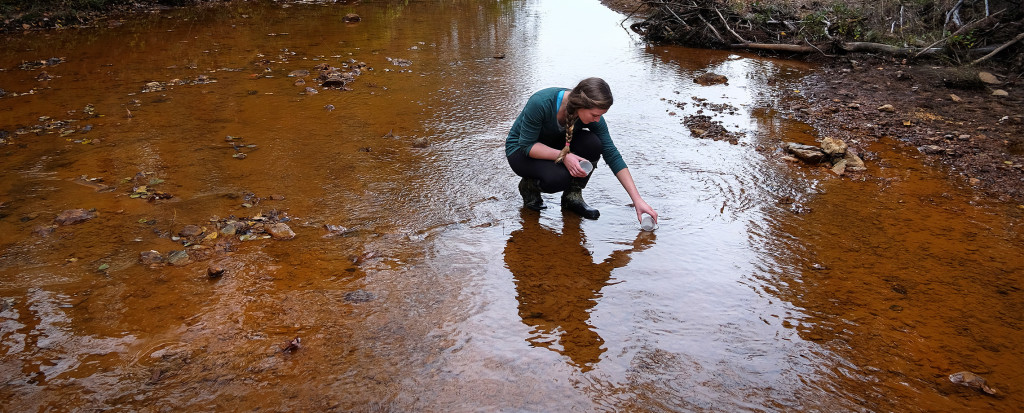The name says it all – “Contrary Creek.” The polluted tributary to the North Anna River and its lifeless red tint rattle the science community that surrounds it. Louisa County locals worry that eating fish from the creek will make them sick. Boats don’t dock nearby for fear of corrosion.

UMW senior Maura Slocum has spent nearly half her college career studying the effects of this particular pollution and searching for ways to reverse it. An environmental science major and member of the President’s Council for Sustainability, Slocum is driven to reduce humans’ negative impact on nature. Her research on the soil near Contrary Creek proves that plant vegetation can help mop up the mess not only at this site but also in similar situations across the country.
Caused by a mine abandoned a century ago, the damage occurred when rain leached heavy metals, such as lead, copper and zinc, from the soil and mixed them into the water.
With Associate Professor of Earth and Environmental Sciences Melanie Szulczewski and lab partner senior Taylor McConnell, Slocum sowed grasses and ferns in the affected area. The plants survived and, perhaps more importantly, helped improve soil and water quality by sucking up the chemicals that caused the pollution in the first place.
Slocum and her group join a long list of scientists who have explored Contrary Creek. During the ’60s and ’70s, she said, UVA researchers studied the site, and remediation efforts by the EPA in the ’70s failed.
“We’ve learned that the grass is an effective remediation tool,” said Slocum, who is president of the UMW Outdoors Club and an Eagle Landing senior resident assistant.
The lessons they’ve learned at the Louisa County site can be applied to other areas, said Szulczewski, who is currently researching soil contamination in Poland. “With thousands of old mine sites across the country, the knowledge we gain about this kind of [contamination] could have broader impacts.”
She will present her findings at UMW’s Student Research and Creativity Symposium on April 22. Now in her last semester at UMW, Slocum devotes most of her class time to research, spending endless hours in the Jepson Science Center lab and finishing her already 55-plus-page thesis.
“She is extremely bright and motivated, and she puts her ideals into action,” said Szulczewski. “Seeing her mature as a scientist has been a pleasure.”
After graduation, Slocum will use the knowledge she gleaned from her UMW research to serve the Peace Corps in Senegal, where she’ll work in agroforestry, using trees to increase soil fertility. She’ll join more than 230 Mary Washington alumni who’ve served in the Peace Corps since its inception in 1961.
“The Peace Corps is the perfect place to implement what I’ve learned about environmental science,” said Slocum. “I’ll be able to work with the environment as an agroforester while also encouraging the understanding of what sustainable development really means.”